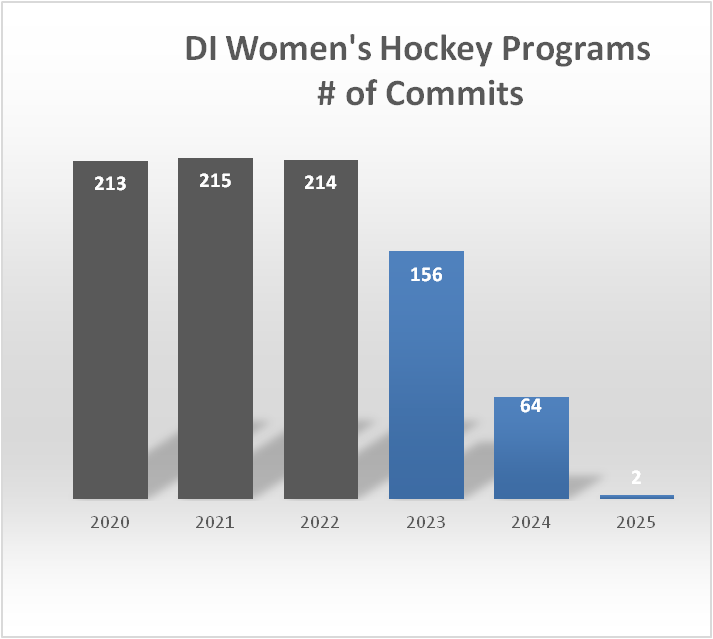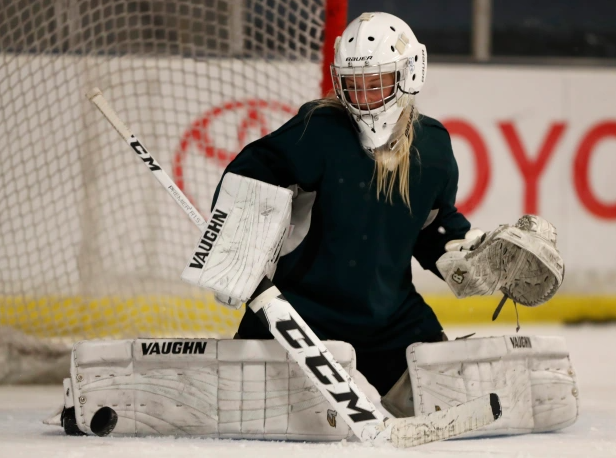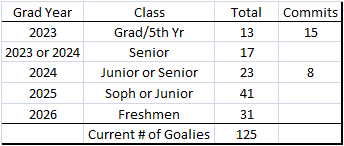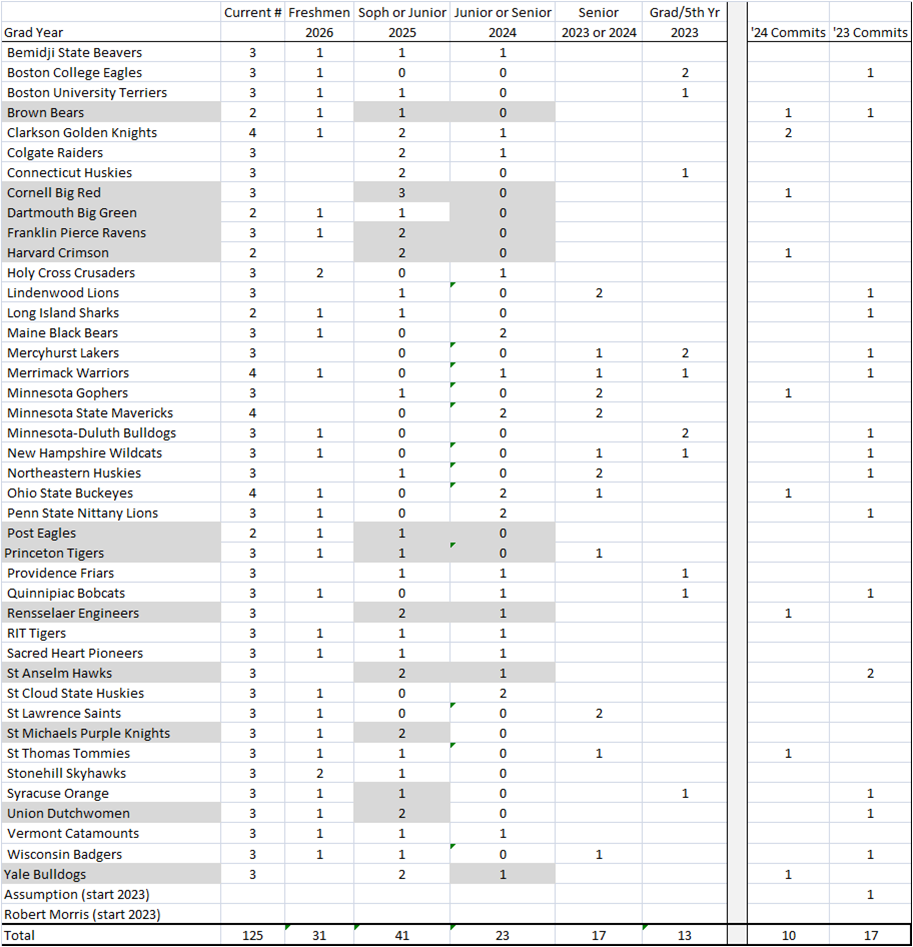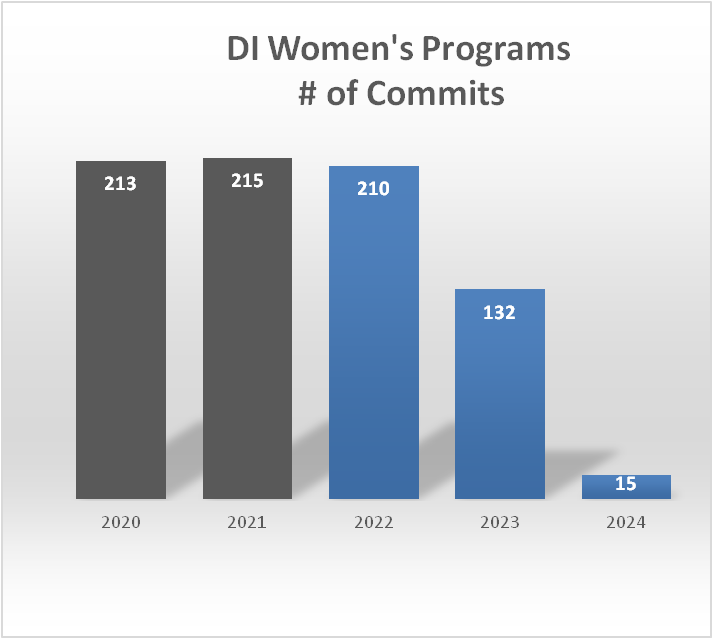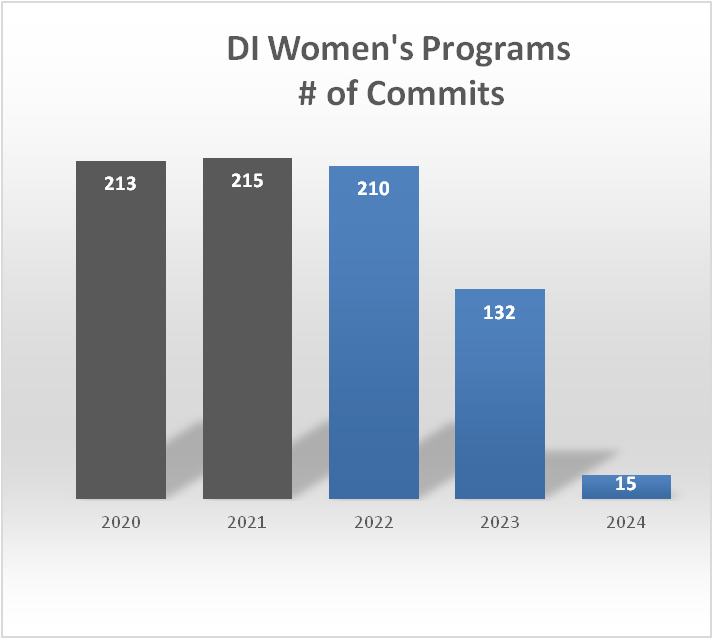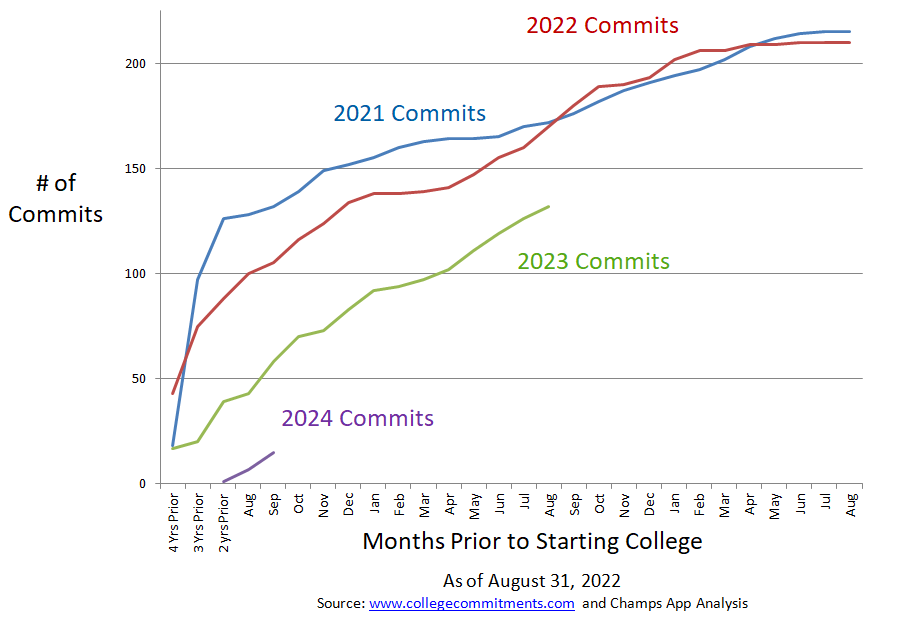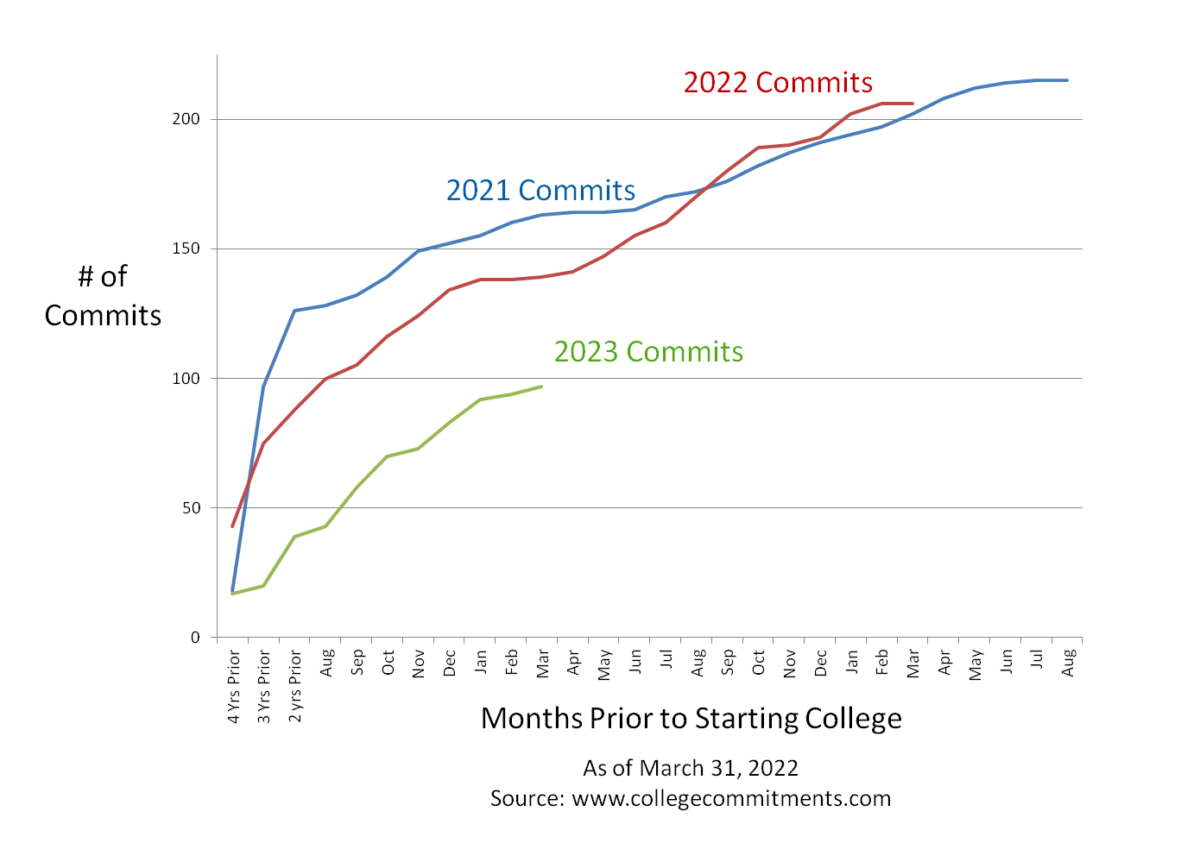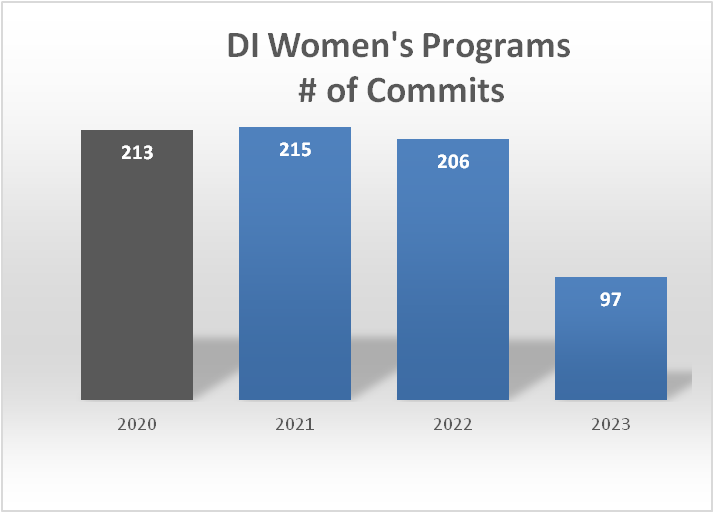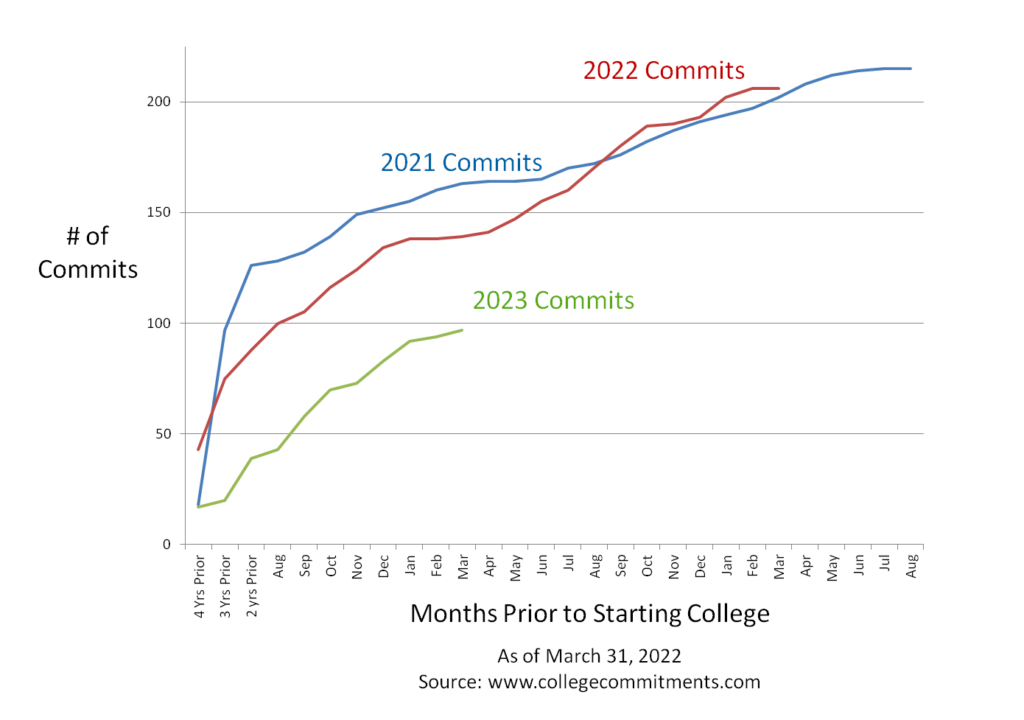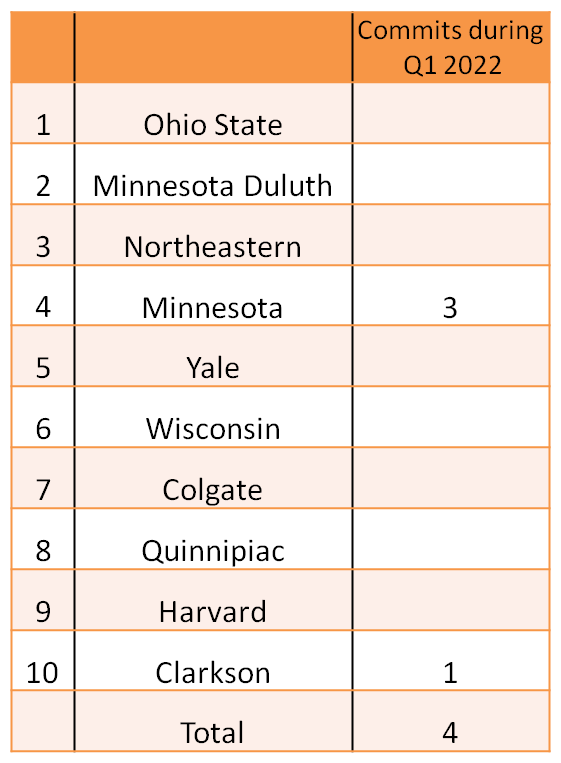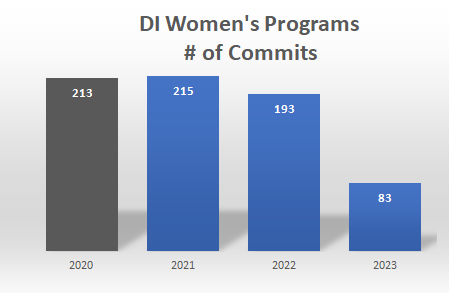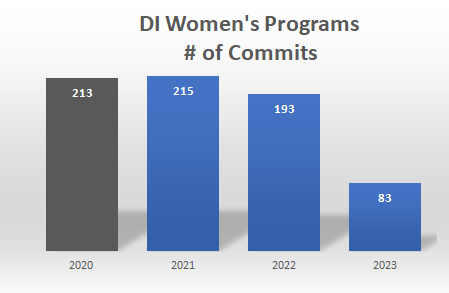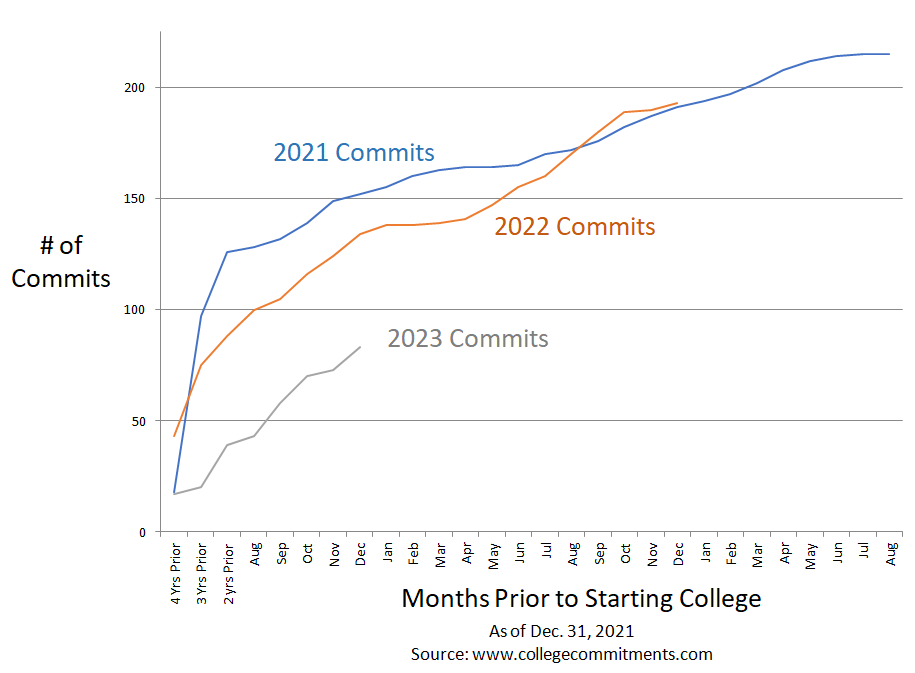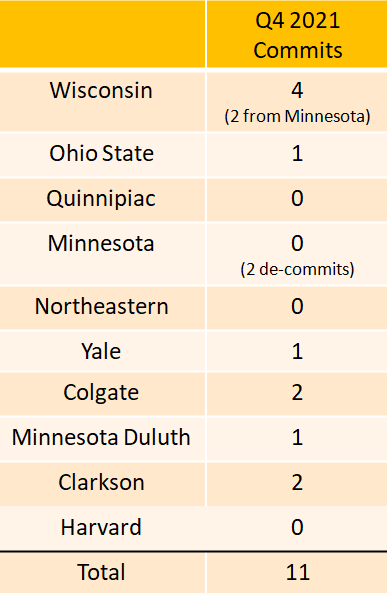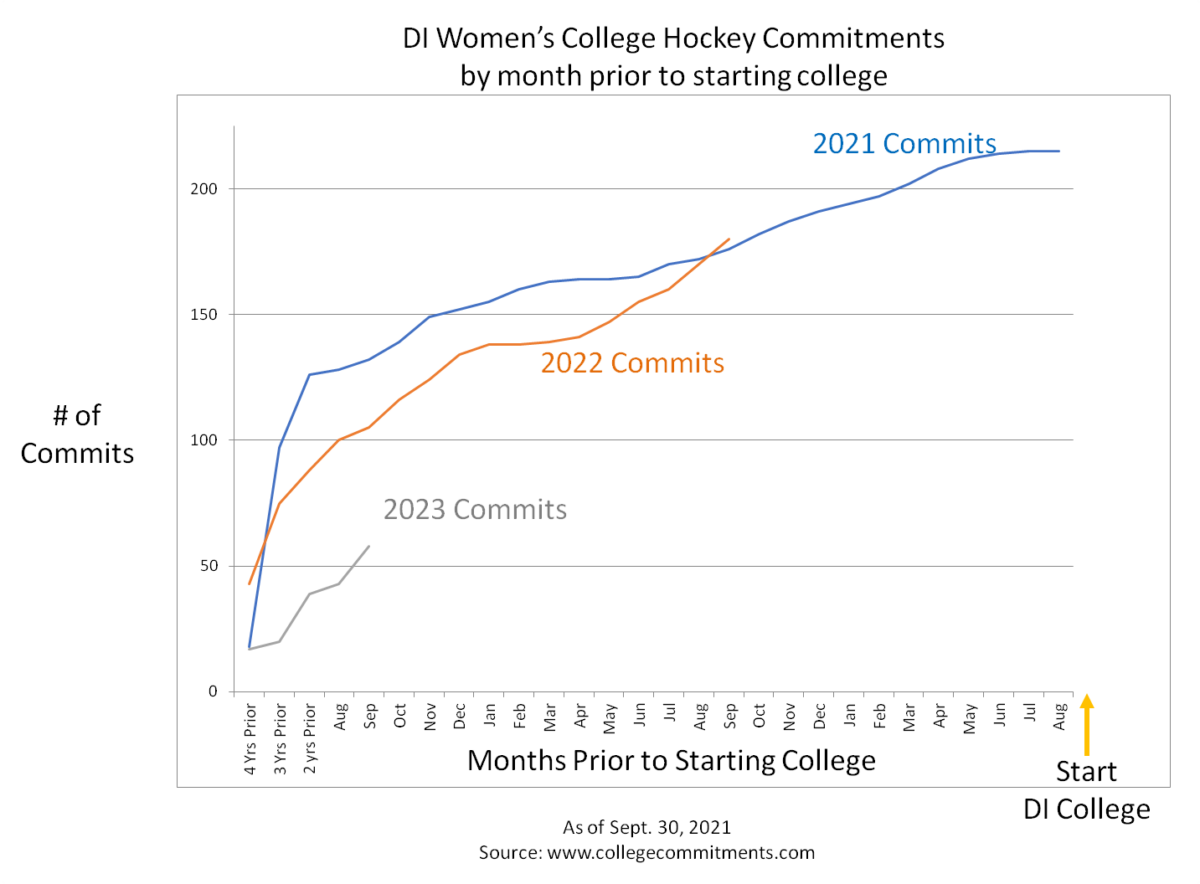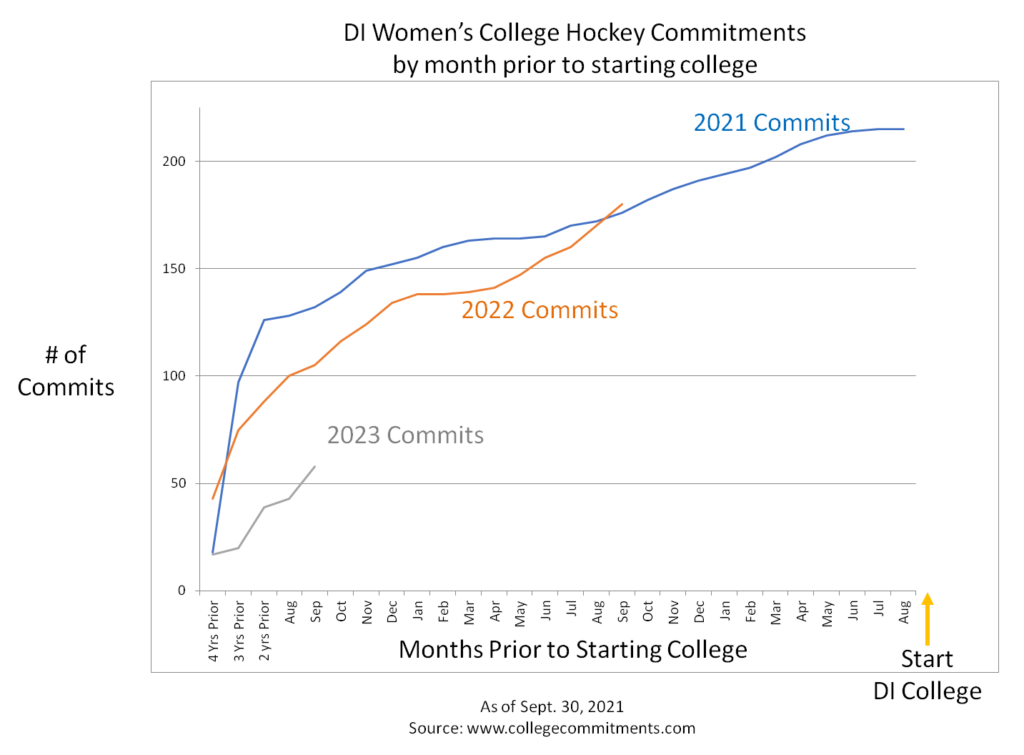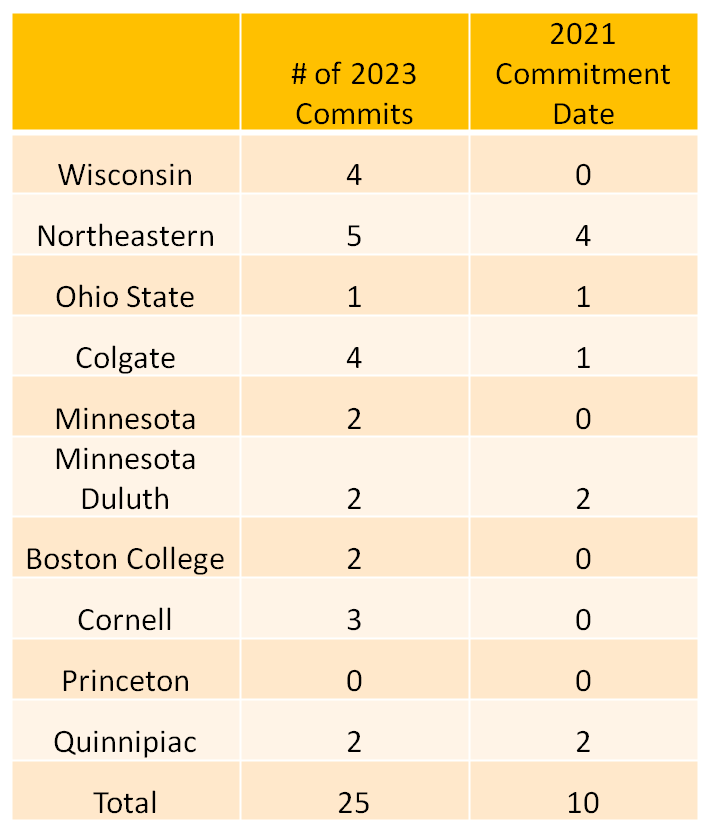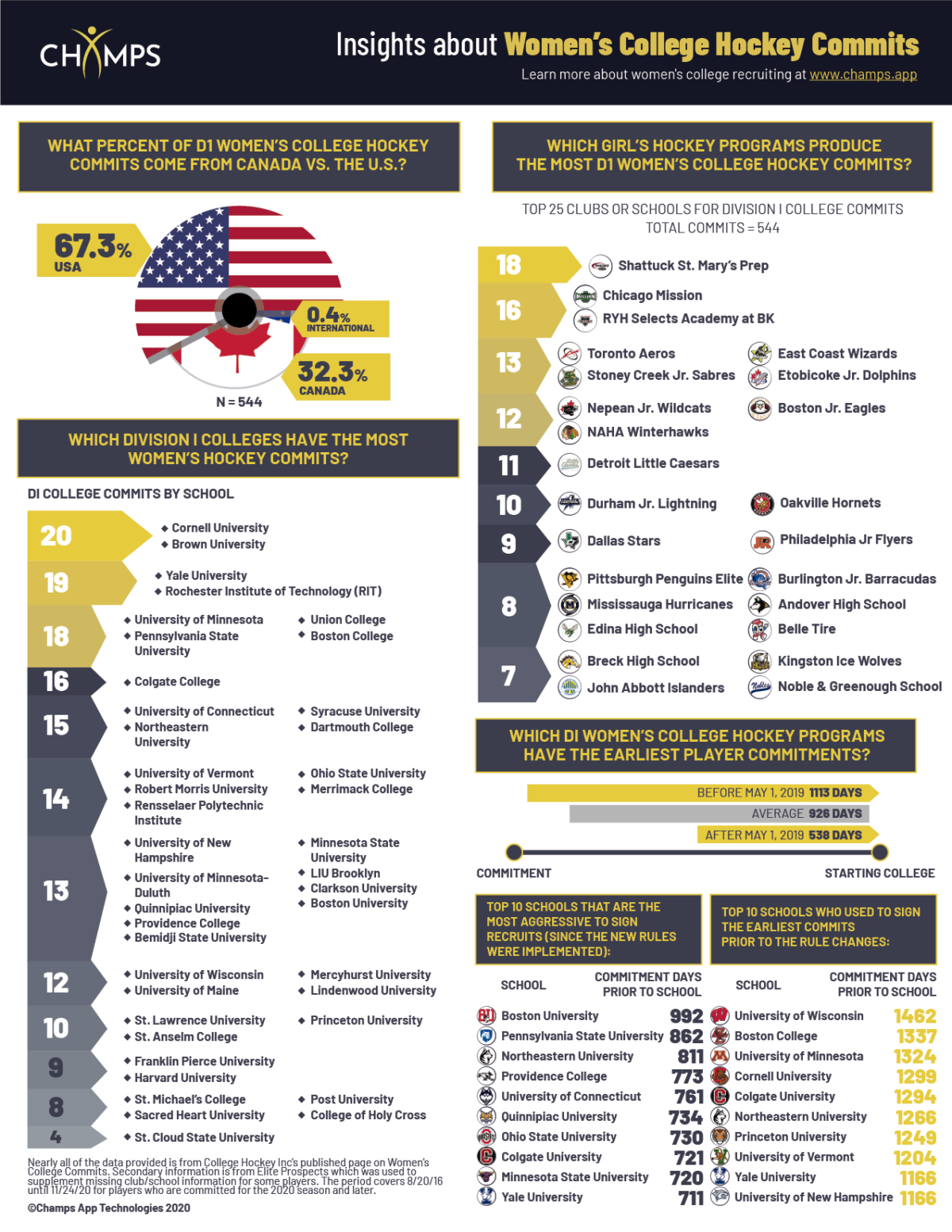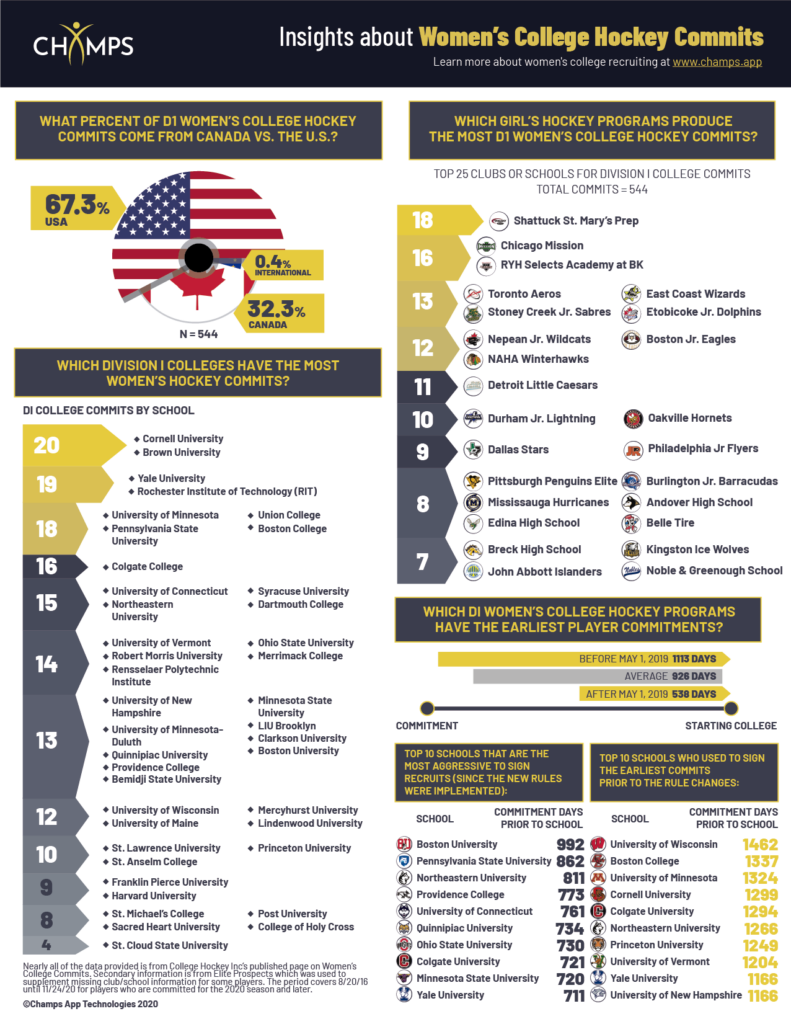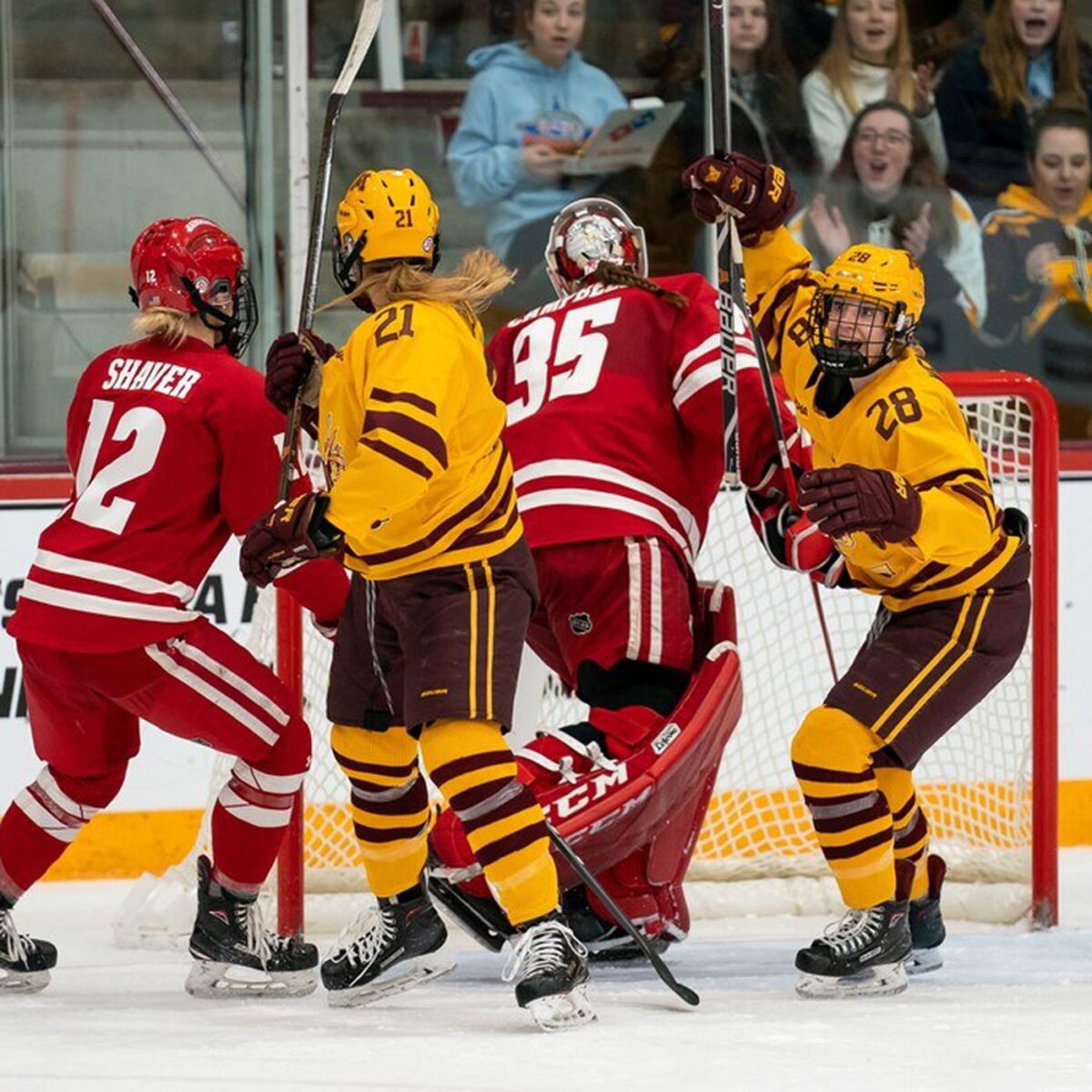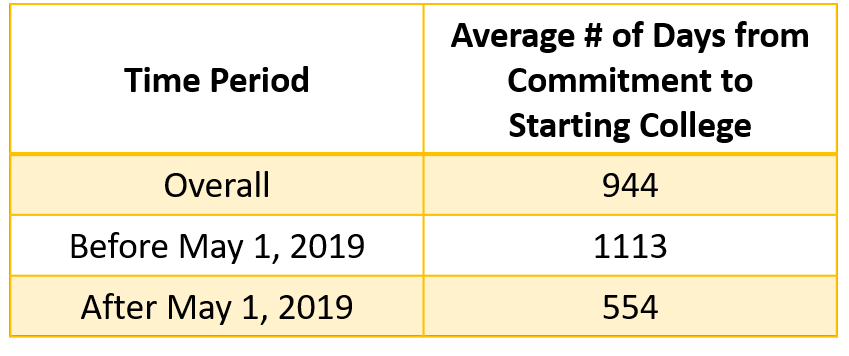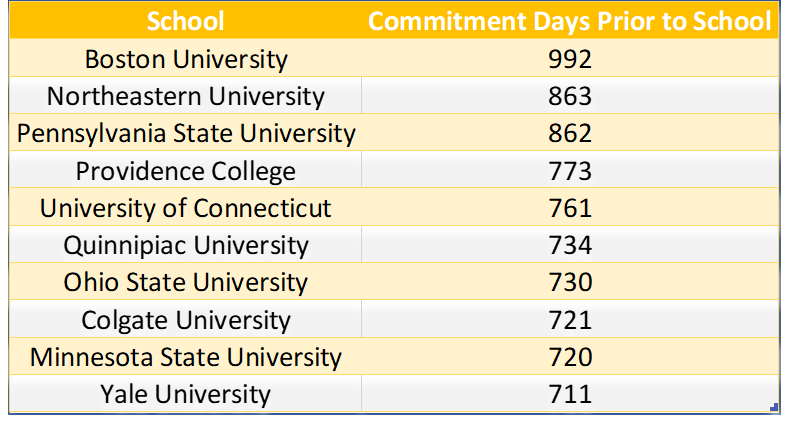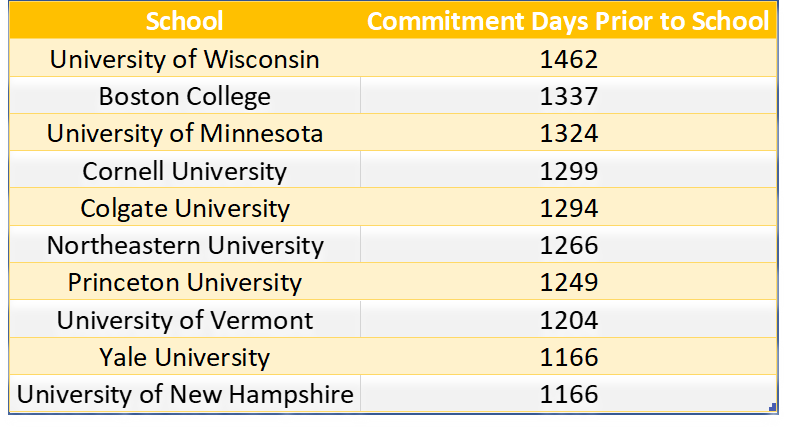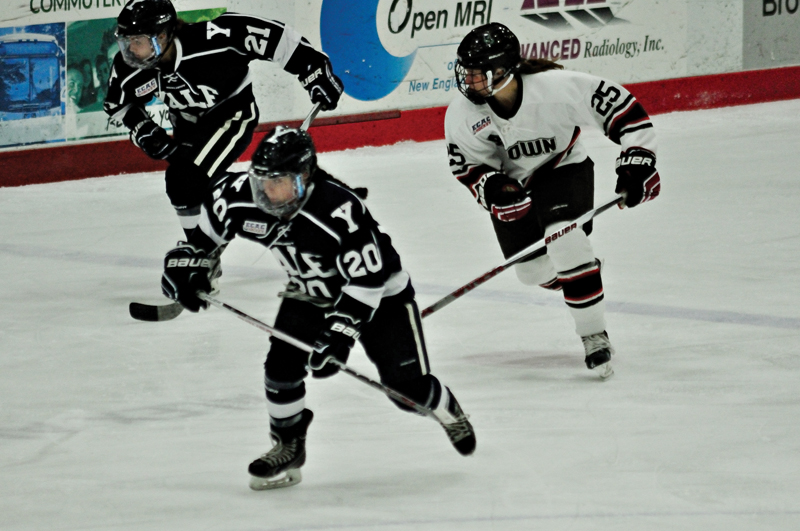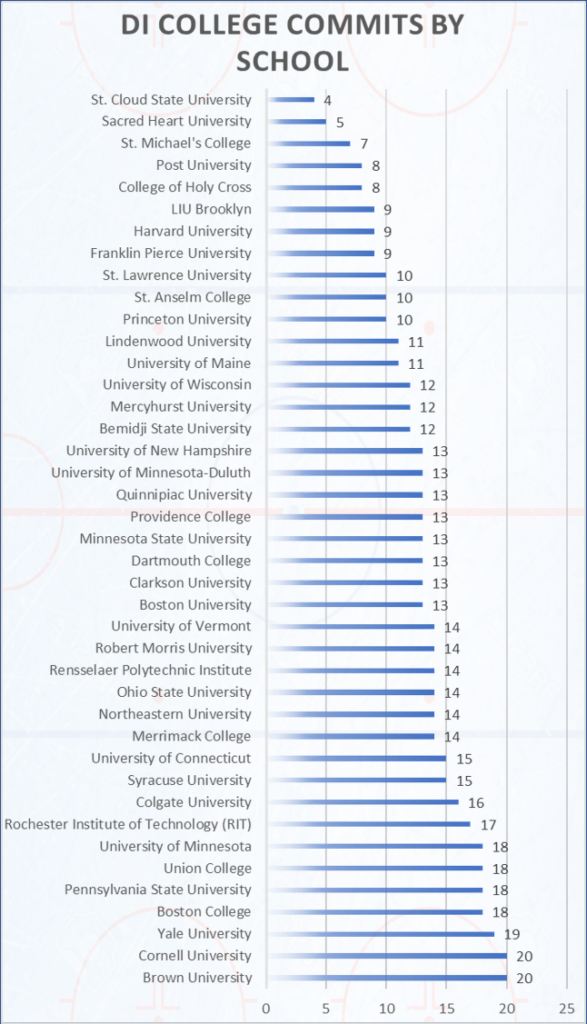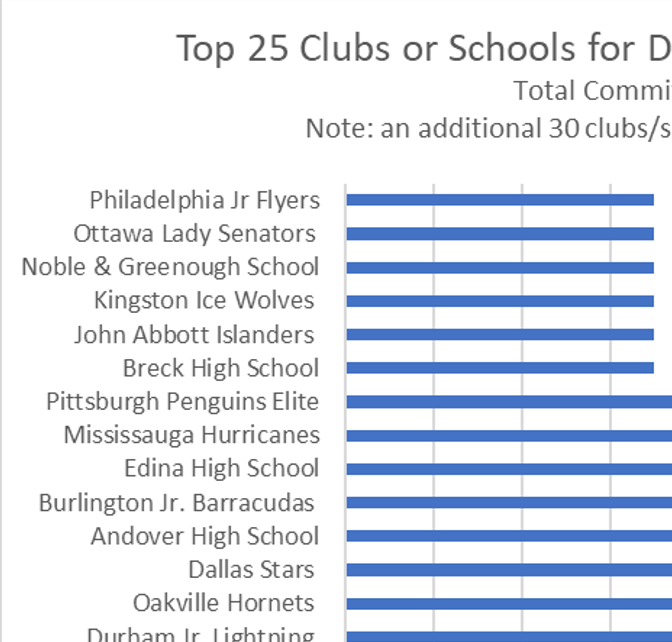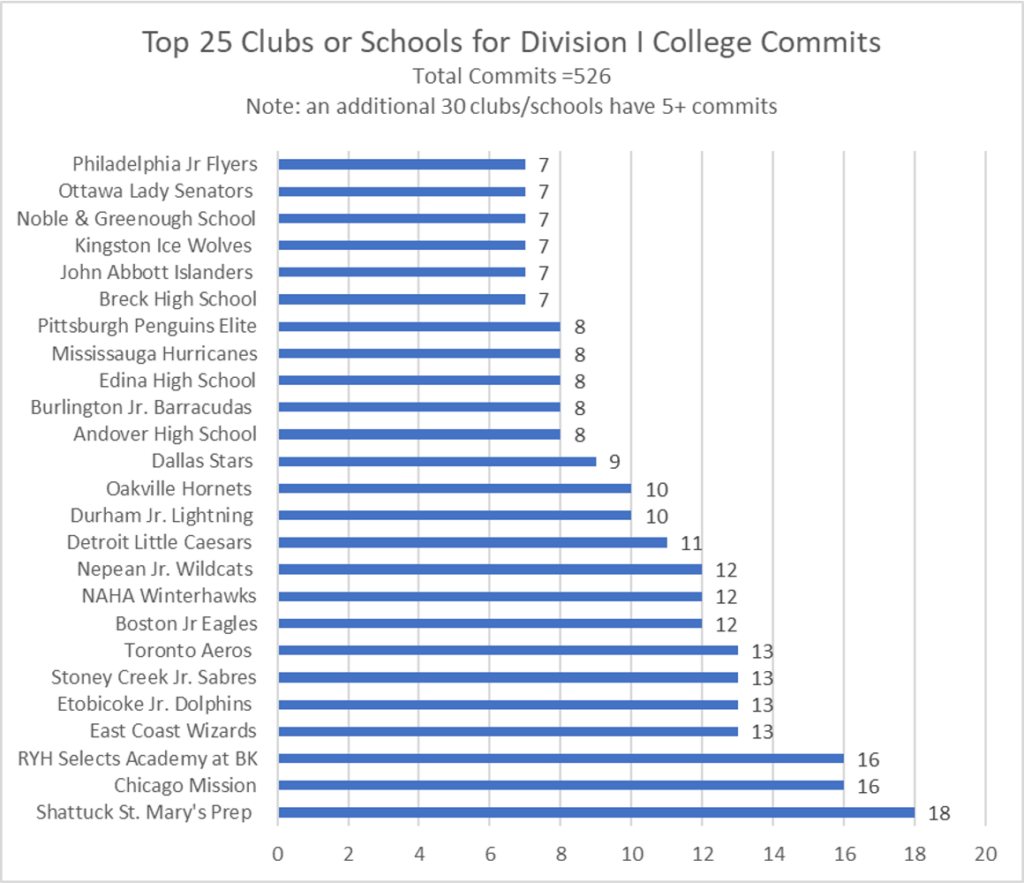This is an update to a previous post from September, 2022 on “Q3 2022 DI Women’s College Hockey Commitment Rate Update”.
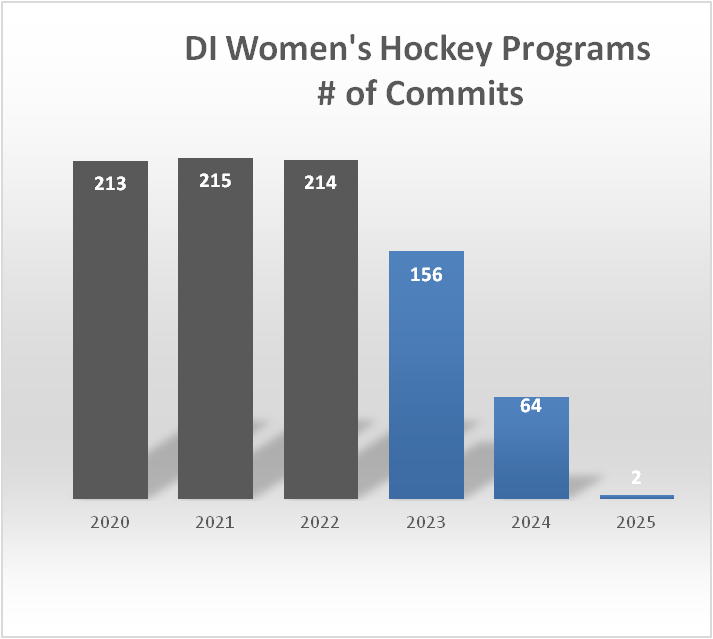
DI Women’s Hockey Commitment Rate by Months Prior to College
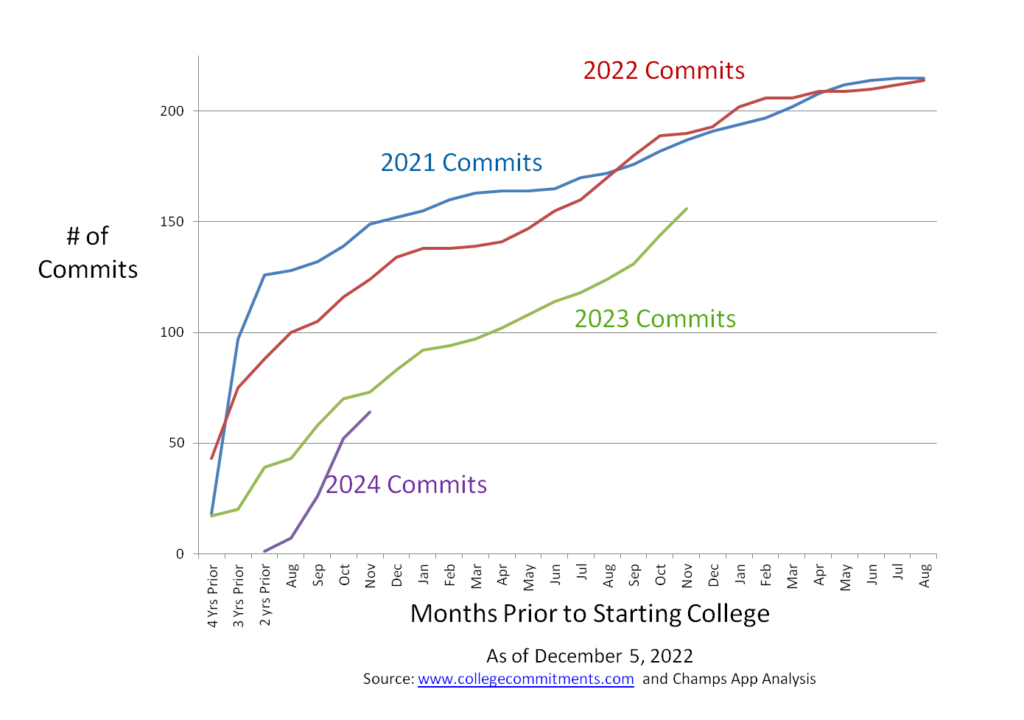
2023 Commits
2023 commits are tracking at about 18% less than the last two years (34 less commitments). Due to 5th year eligibility, red-shirting and grad transfers this is consistent with our recent analysis on forwards and goalies. It appears as though many of the 2023 Forward spots are already taken but there is likely still another 20-30 spots available across a handful of schools.
2024 Commits
The 2024 commits are slightly behind the 2023 commitment rate as of December, 2022 by about 12% (64 2024’s vs 73 2023’s).
It looks like ~25 F spots have shifted from 2023/24 to 2025. So ~25 less forward spots will be available for 2023/24 grads combined.
2025 Commits
The first couple of commits for 2025 have been announced. Both are for the forward position and are Canadian players who are 2006 birth years, but will only start in 2025.
Goalies
There are 14 2023 commits and 8 2024 commits that have been publicly announced. In a “normal” year there should be about 33 freshman goalies per year (44 teams x 3 goalies per team / 4 years). As mentioned above, the extra year of eligibility or red-shirting has provided a glut of goalies already at the NCAA level who are filling spots that would normally be filled by the incoming classes.
Data assumptions:
- Data commitment dates – source: collegecommitments.com and Champs App analysis
- Transfers between DI programs are not included in the number of commits
- Total number of publicly announced commitments for 2021 was 215 and for 2022 it was 214

